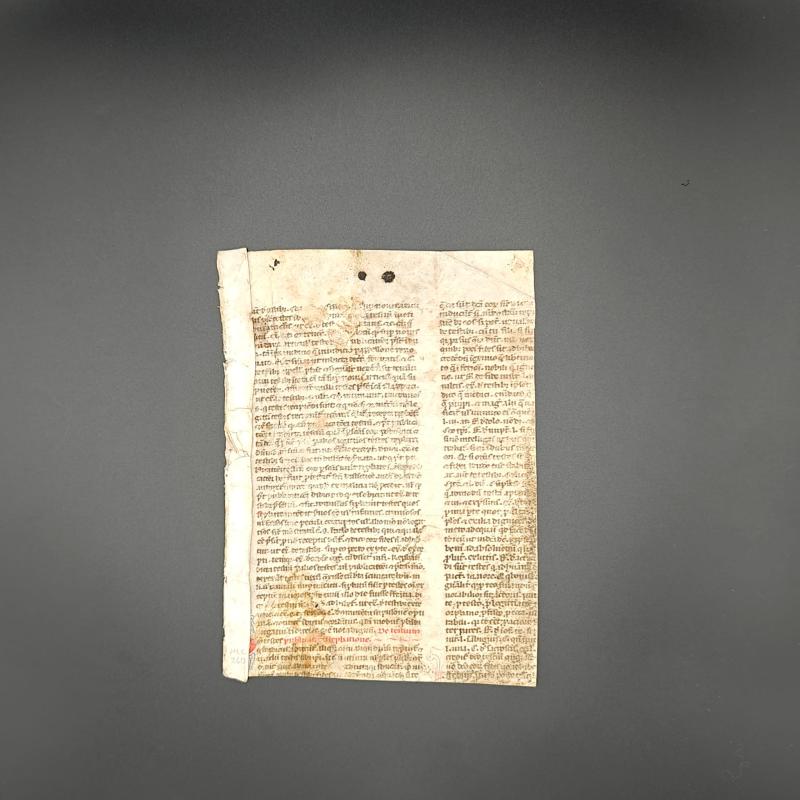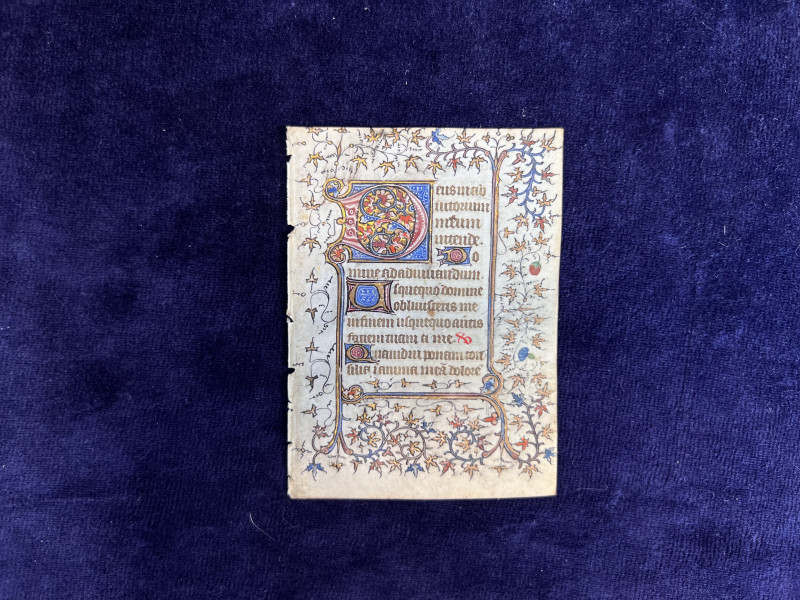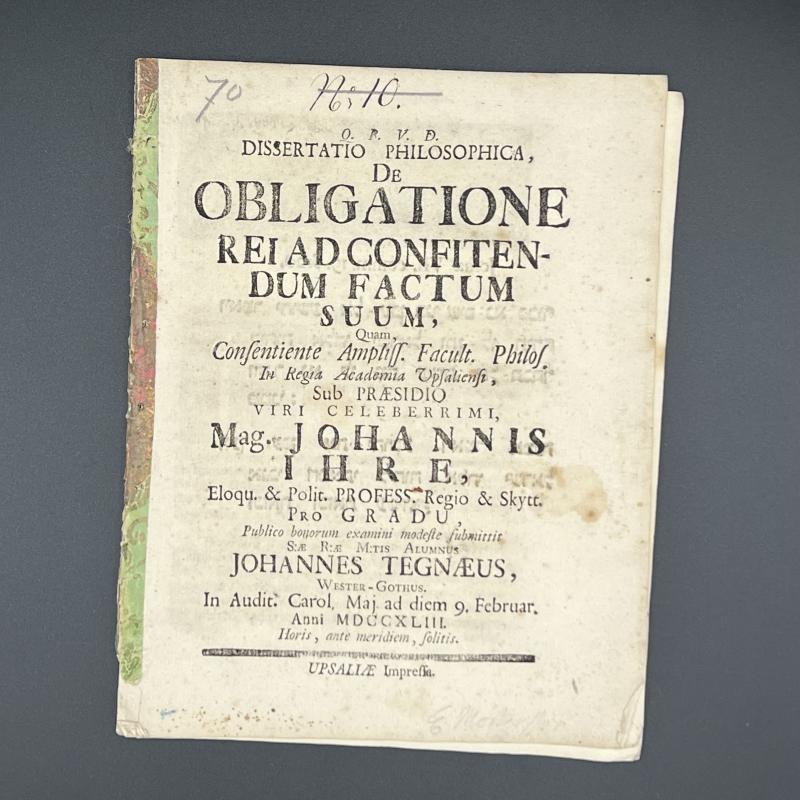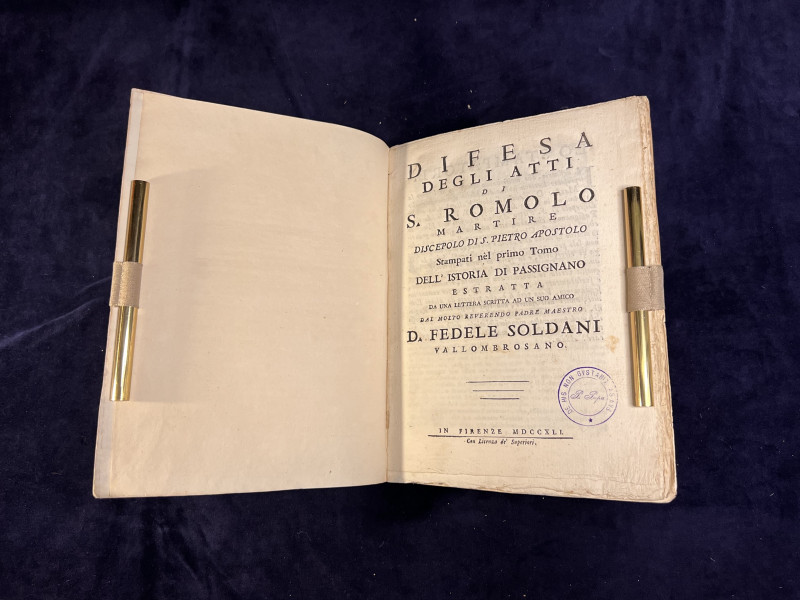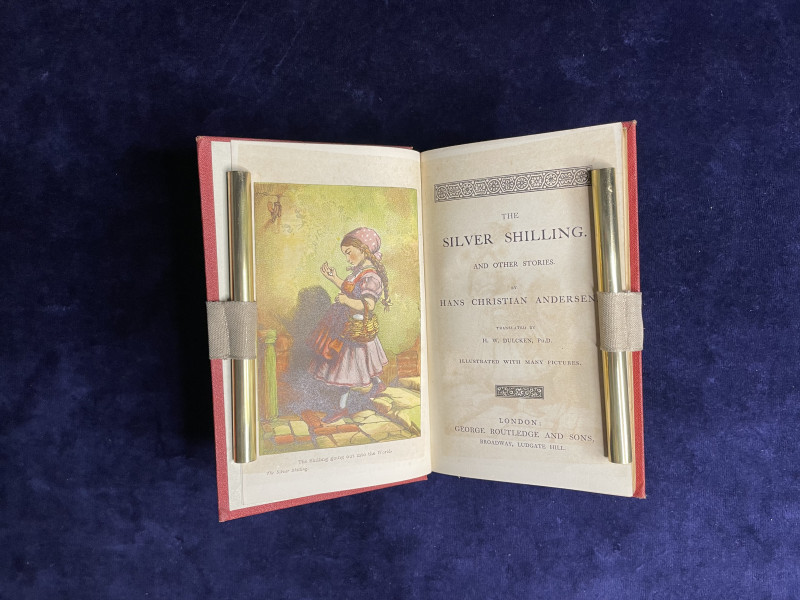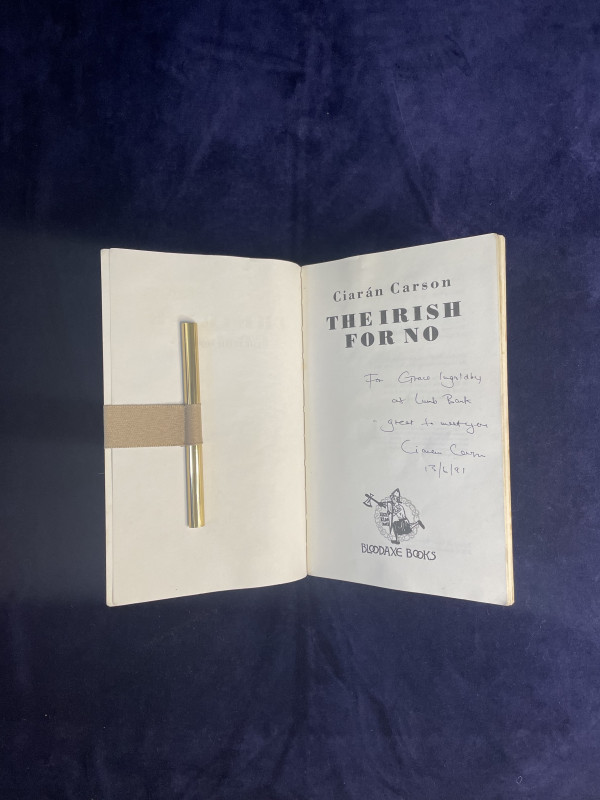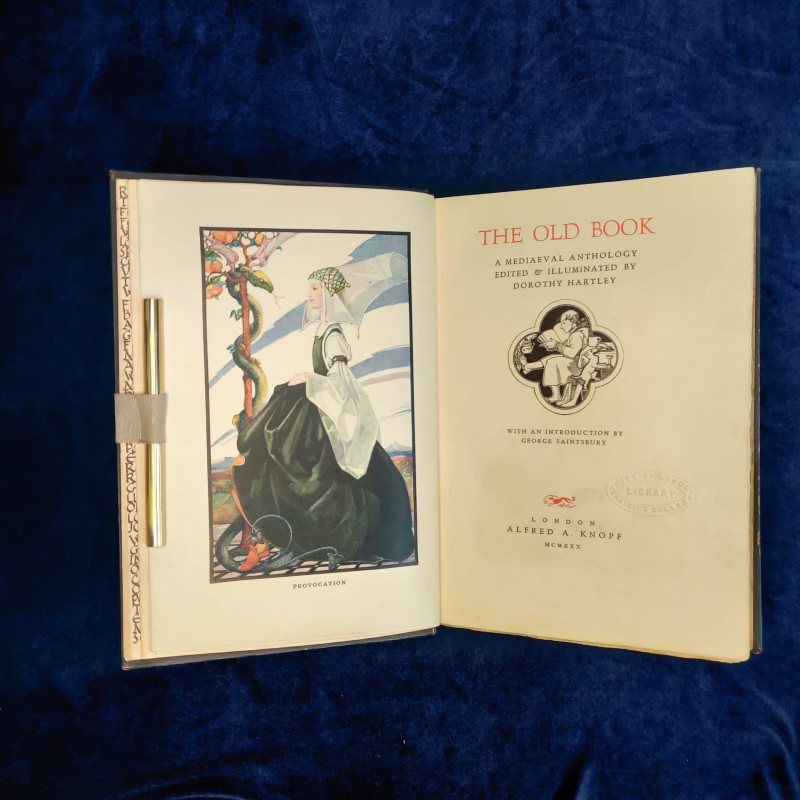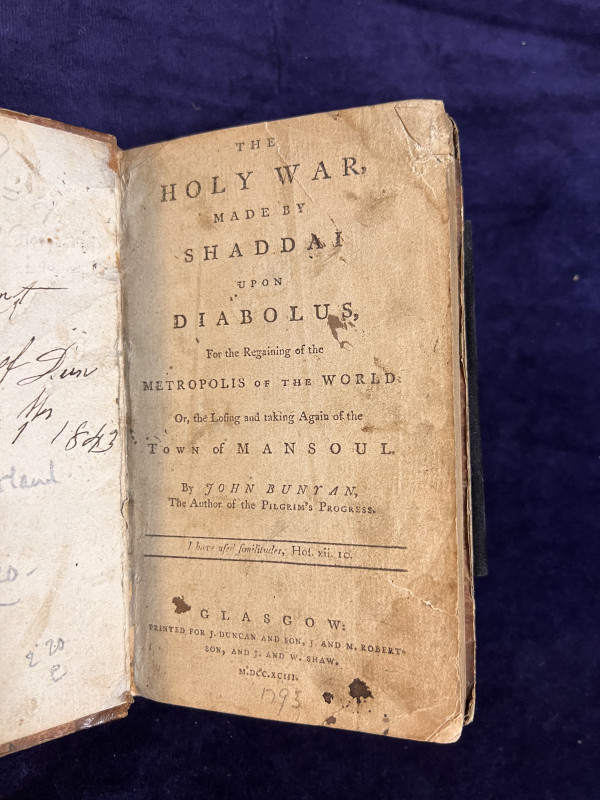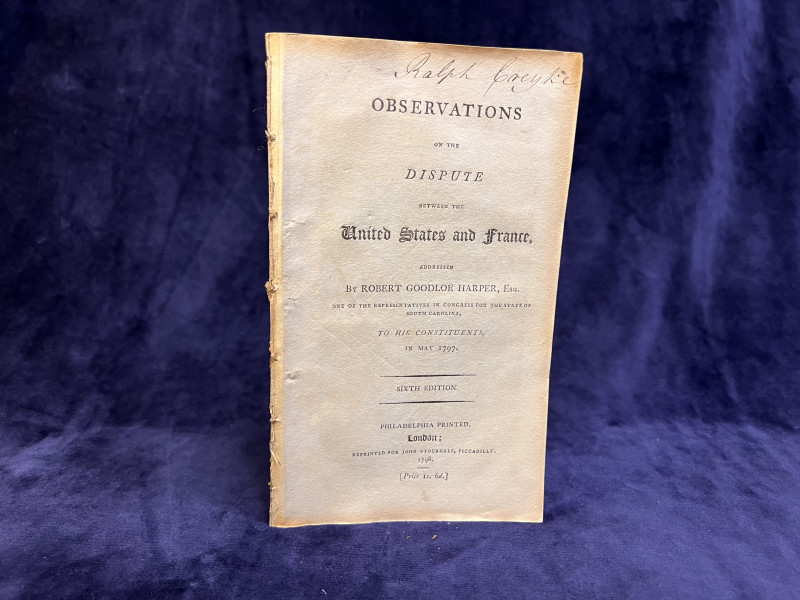Ordo Judiciarius
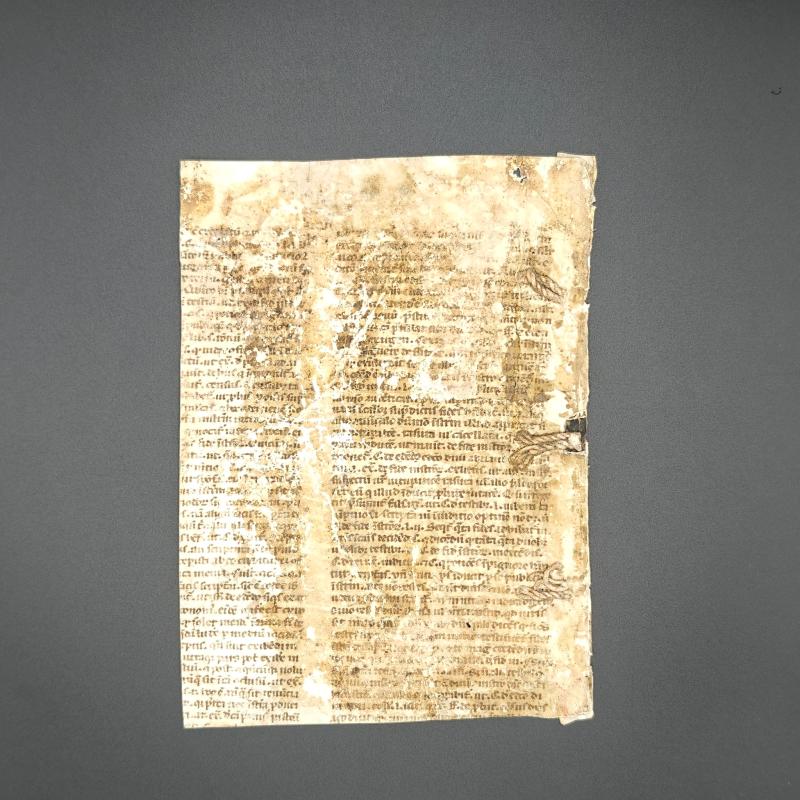
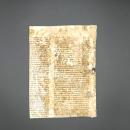
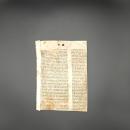
Book Description
[Fragment from Tancredus Bononiensis (1185- ca. 1236), Ordo Judiciarius, Parte. 3, Tit. 10-13]
Italy, second half of 13th century.
(190 x 140 mm) One partial folio fragment on vellum, evidently used as binding waste. Latin Southern Gothic Textualis, written in incaustum ink, with flaking, two columns of approximately 42 lines of text with losses from binding. Titles included on this folio are: De testium publicatione (T. 10); De reprobatione testium (T.11); Quibus testibus fides adhibeatur et quanta (T. 12); De exhibitione instrumentorum et fide ipsorum (T. 13). Rubrated heading on verso with 5 line rubricated initial with ornamental blue penwork. Ruled simply in graphite. Script incorporates significant use of scribal abbreviations. Roundness of letterforms, uncrossed style of Tironian et with left-hand side curve downward, and q with subscript bar for qui suggest Italian origin. Abrasion on verso, lesser abrasion on recto. Three cords (raffia material) from later-stage binding, providing losses to text. Provenance: Bernard Rosenthal 1964. The Marvin L. Colker Collection, London (MS 260).
About the Author:
Tancredus Bononiensis (ca. 1185–1230/36) was a Dominican friar and canonist, often confused with his contemporary Tancred Tancredi. Likely of German origin, he studied under John of Wales at Bologna and became a leading figure in early 13th-century canon law. His most influential works include a gloss on the Compilatio tertia, the Summa de matrimonio—which shaped the thought of Raymond of Penyafort—and the Ordo iudiciarius (completed 1216), a foundational procedural manual widely disseminated in Latin, German, and French. A supporter of papal infallibility and the Humiliati, Tancred later joined the Dominican Order, receiving the habit in Bologna between 1218 and 1220. He served as prior in Rome and taught figures such as Bernard of Botone.
Due to the lack of standardized names in the pre-Modern period, as well as the international importance of the author, we also find his works listed under: Tancred (LC); Tancredus Bononiensis; Tancred of Bologna; Tancredi da Bologna; Tancredi da Bologna; Tankred von Bologna; Tancrède; Tancred of Lombardy.
About the Text:
Tancred’s “Ordo iudiciarius” is a procedural manual that became a foundational text for ecclesiastical legal procedure. It provided a structured and methodical approach to court processes, influencing later developments in both canon and civil law. His writing aimed to clarify and teach legal procedures, not merely record them. His work demonstrates a pedagogical clarity intended to guide both students and practitioners of canon law. The “Ordo iudiciarius” was widely circulated and remained influential for centuries, with its clear articulation of procedure and logical structure earning it a place in university curricula and ecclesiastical courts.
Tancred’s approach is marked by logical organization and precision, reflecting the scholastic method that was becoming dominant in the legal faculties of universities like Bologna.
In sum, Tancred played a pivotal role in shaping medieval legal practice through a methodical and educational treatment of procedural law, particularly in canon law, and his works remained authoritative well into the later Middle Ages.
This leaf contains a fragment of Part 3, Titles 10-13:
On the publication of witnesses (T. 10);
On the rejection of witnesses (T.11);
To which witnesses is faith to be given and how much (T. 12);
On the exhibition of instruments and their faith (T. 13).
The text of this section follows along the printed edition: Pilii, Tancredi, Gratiae Librei de iudicorum ordine. Gottingae: [Hrsg.:] Freiderc Bergmann, 1842, pp. 240-250.
About the Manuscript:
The round aspect of the script suggests an Italian origin, which is confirmed by palaeographic clues, such as the uncrossed Tironian et (an abbreviation for and) with a left-hand curve on the bar and qui abbreviated as q with a subscript bar.
This manuscript was penned likely shortly after Tancred’s death in the 1230s, no later than the late 13th century.
Other roughly contemporary examples of this work can be found in Cambridge (UL MS Add. 3424), Yale (Marston MS 228), Bibliothèque royale de Belgique (ms. 3984 and ms. 5217), Seville, Biblioteca Capitular y Columbina (07-3-37), and Bulle, Musée gruérien (shelfmark 384).
The condition of the fragment contributes to our understanding of its post-production live. The three bands of twine, the abrasion, the unusual folding— all point to the use of the fragment as a bit of binding waste, a common re-use for manuscripts in the later Middle Ages and Early Modern period.
About the Provenance:
The storied provenance of this fragment sees its journey from one important collection to another: from Bernard M. Rosenthal via the 1964 sale to the University of Virginia Professor of Classics, and noted palaeographer, Marvin Colker.
Author
Tancredus Bononiensis
Binding
None
Condition
Good
Pages
1
Friends of the PBFA
For £10 get free entry to our fairs, updates from the PBFA and more.
Please email info@pbfa.org for more information
